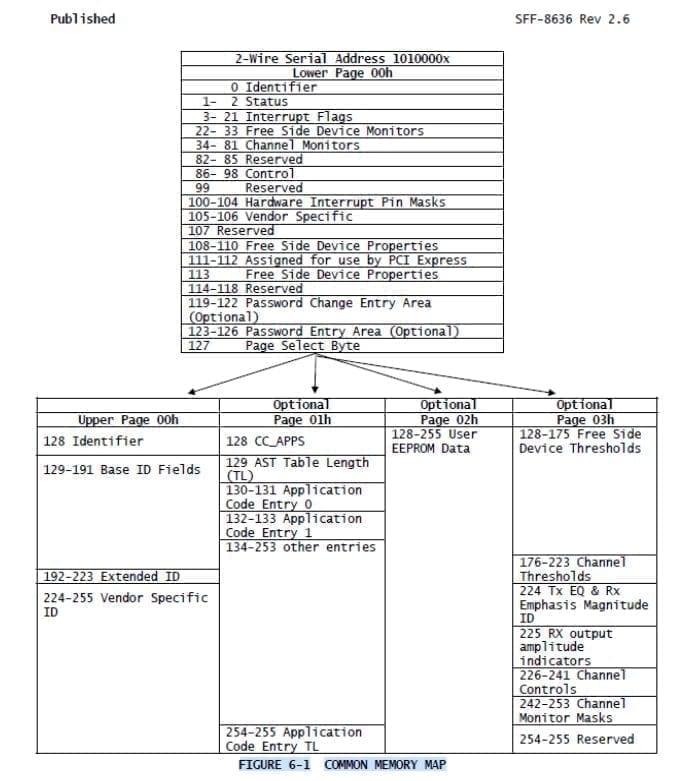What is Customized / Hybrid Optical Transceiver Coding?
QSFP Memory map
Source: SFF-8636 Specification forManagement Interface for Cabled Environments
When it comes to optical transceiver coding (EEPROM memory tables 00h, 01h etc) many equipment vendors follow optical transceiver industry specifications, however some vendors have chosen the path where if optical transceivers will not have specific vendor set criteria in the EEPROM tables, ports will be blocked and traffic will not flow.
Customized (hybrid) coding refers to the situations when vendors originally did not have specific optical transceiver hardware type in supported transceiver list and we make hybrid solution of hardware and code, where we use preferred hardware (not in the supported transceiver list), but in the code we write most close optical transceiver from the supported transceiver table.
Below example explains the situation more in-depth:
We recently had successful 100G-QSFP28-80 (ZR4) tests in Nokia routers (7210 SAS-Sx, 7750 SR1 and 7250 IXR). Originally these Nokia routers not support 100G ZR4 module, but we made a hybrid solution, where hardware remains 100G-QSFP28-80 (ZR4) and code is 100GBASE-ER4 (40km), with such hybrid solution we can have ZR4 80km link performance, but optical transceiver is recognized as ER4 40km and is accepted by the networking gear. Similar hybrid approach is done to make CWDM/DWDM/BIDI or long distance optical transceivers work in platforms where they originally are not among supported transceivers.




